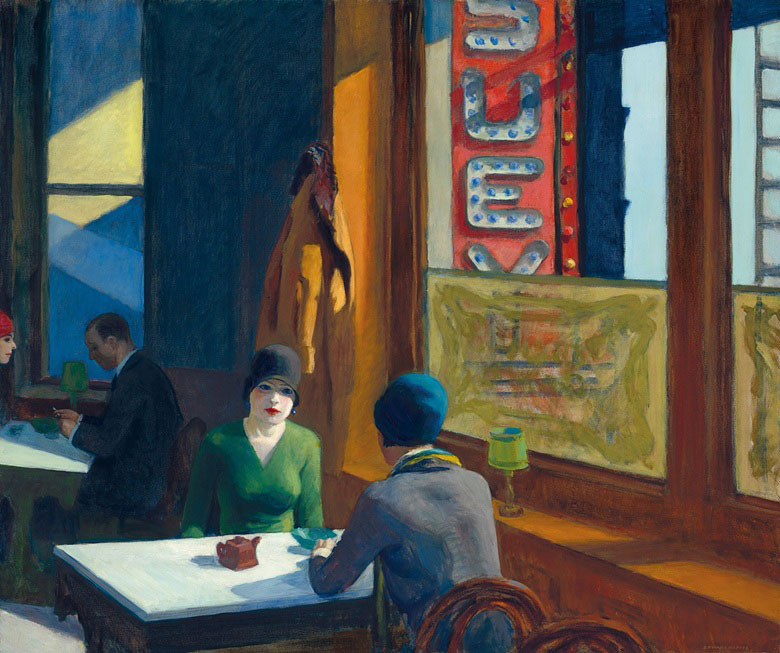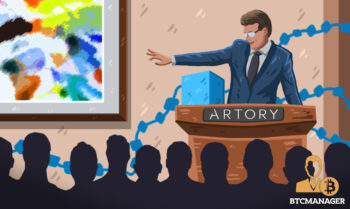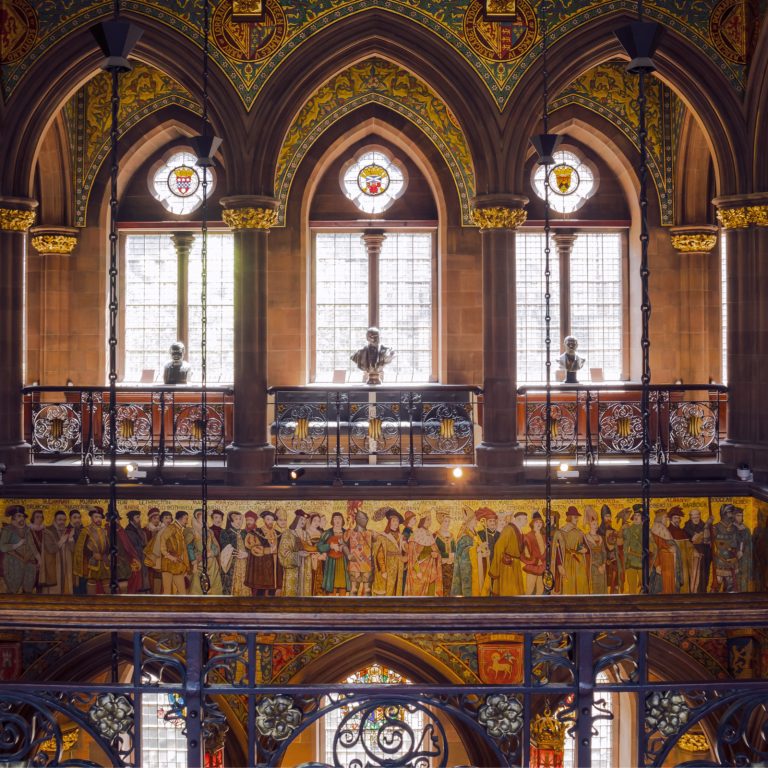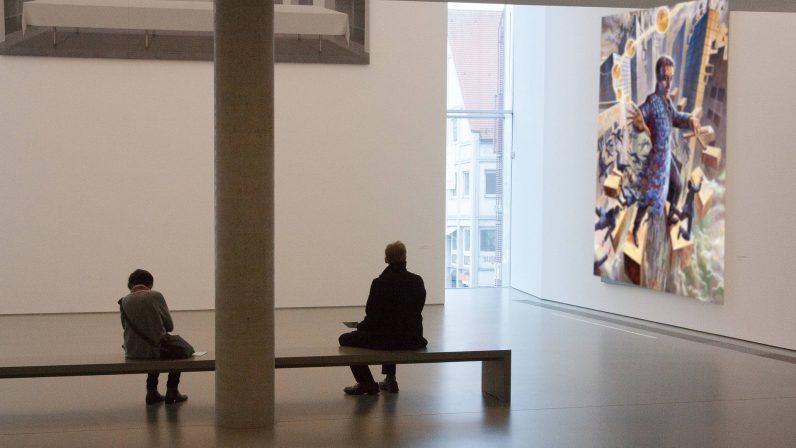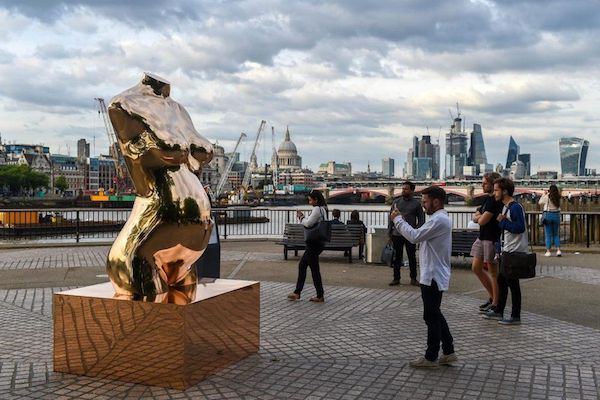
2019-10-7 18:45 |
Dada.art uses blockchain technology to find novel ways to connect artists and create engaging works. Artistic works are produced exclusively on the website itself, in collaborative fashion, prioritizing feedback and interaction between artists.
The dada.art website features conversational works created by two, three or even forty artists. Each artist responds to what previous artists have created or simply begins anew. The cumulative work both preserves individual contributions and manages to develop a narrative. These artistic interactions are considered conversations, and just like the spoken kind they represent a sort of give and take between two or more people.
Visual conversations are like jazz improvisations, with many different artists working in harmony towards one melody. - dada.art websiteThese “conversations” develop in a way that resembles the way blockchains are built. They start with a conceptual genesis block of art, then persist by adding successive “blocks” from collaborators. Unlike blockchains, these works do not simply continue ad infinitum. The community chooses their favorite conversations, and those are officially issued and put up for sale.
The dada.art site has a set of basic drawing tools that allow anyone to participate, join an existing conversation, or start a new one. Co-founder Beatriz Ramos insists on providing only a basic set of drawing tools to avoid intimidating newcomers.
This also serves to discourage striving for perfection in favor of actually creating. Often a theme or style or a flow created by one artist is quickly picked up on by the others. Each new drawing is appended onto a chain of previous images, forming a composite creative work – giving rise to the question of whether the art is on the blockchain, or the means of creation is the art itself.
I drew the picture on the left… Isa added to it (right)
…and then Serste added to that…
Dada also runs an online art gallery where collectors can purchase these provably scarce works. There is exactly one tokenized asset corresponding to each work, often referred to as a non-fungible token (NFT).
These works are tokenized on the Ethereum blockchain, and you can buy them online using the Metamask browser extension or other wallet.
How it StartedBeatriz Ramos had a vision to build a social network to empower artists. As an artist she was keenly aware of being more eloquent with images than with words. She assembled a team in 2014 to bring this network to life, including co-founder Judy Mam, a veteran creative director who has a lifelong familiarity with galleries and museums, collectors and curation.
They built a platform that is social in nature, but focused squarely on art production. Initially there was only artistic creation; there was no blockchain integration until 2017. Clearly the way forward was allowing collectors to get involved and to enable online sales to generate income for the contributing artists, but that doesn’t happen overnight.
The community of artists participates by engaging in these visual dialogs. An artist will create an initial piece and others will riff on it, chaining their work onto the original. Ideally a cohesive theme will be developed and expanded by including the perspectives of multiple artists.
How it WorksThe primary utility of DADA is provided by the drawing tools from which all works on this site are composed. The most useful tool, however, might be the comment box that sits innocently beside each drawing. Anyone can create something here for free, but interaction with other artists and art works is the glue that often makes the magic happen, and is strongly encouraged by design.
“It’s all about the community,” according to Ilan Katin, one of the regular contributors. “The concept is great, it is one of the most fulfilling art experiences that I’ve had involving blockchains.”
Artists accumulate reputation as they generate art; follow other artists; or simply “like” works they see. There are a few artists who have produced thousands of drawings, but most are far less prolific.
The art gallery began with a collection known as “Creeps and Weirdos” that features over a hundred weird and creepy beings. Since then the site has grown to house a total of more than 114,000 drawings at this time, organized and searchable by artist or by tags.
A primary objective of the site, now that these visual conversations are taking on a life of their own, is to get more collectors involved. A small subset of work is voted up by the artists and placed in the gallery section for sale. Technically each piece is a non-fungible token on the Ethereum blockchain, along with the associated digital image it represents.
In this way collectors can be assured of a work’s authenticity and future buyers can track the provenance of each creation.
Future DirectionsThe initial collection offered up for sale was curated by the site operators, but since then the process has been driven by artist preference. According to Judy Mam, curation will end up being decentralized using a gamified system. In fact, they have many upgrades in the works including a re-designed site launching in November.
DADA will soon be raising a round of funding as well, and the team has some ideas in the works related to attracting more collectors. This is one of their top goals, since artists do need to earn a living and there is currently a surplus of creative works thanks to the wealth of artists using the site. Reducing friction for new collectors to participate is a challenge that the entire blockchain art world struggles with.
Educational outreach is also needed in order to convey an understanding of the value proposition; blockchain tokens and digital scarcity are not familiar ideas for many in the world of art. Collectors who purchase art need to be patient for example, since it is a blockchain transaction and won’t be instantaneous.
There are opportunities to evangelize from time to time, like the PBS News Hour feature last week that included this social art platform with a thoughtful presentation of the basic premise.
When we asked Judy about her aspirations for DADA she replied, “In the long run, we want to create an art-based token economy in which artists will eventually get a guaranteed basic income for participating in DADA.”
A pretty lofty goal to be sure, but they’ve made something that feels valuable and unique already so perhaps they can accomplish this too.
The post DADA: Not Just Art On A Blockchain, But A Blockchain As Art? appeared first on Crypto Briefing.
origin »Maecenas (ART) на Currencies.ru
|
|
